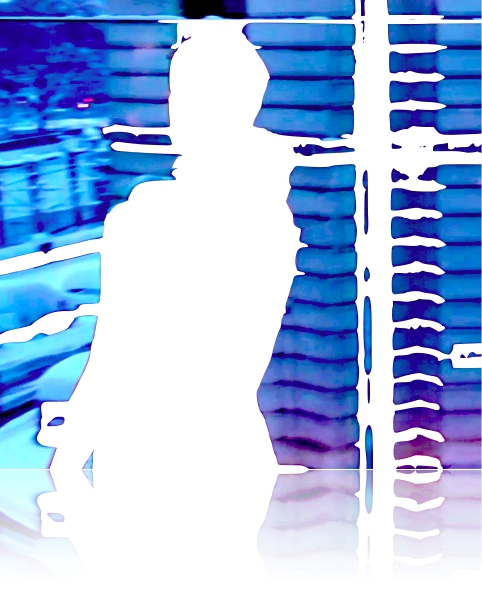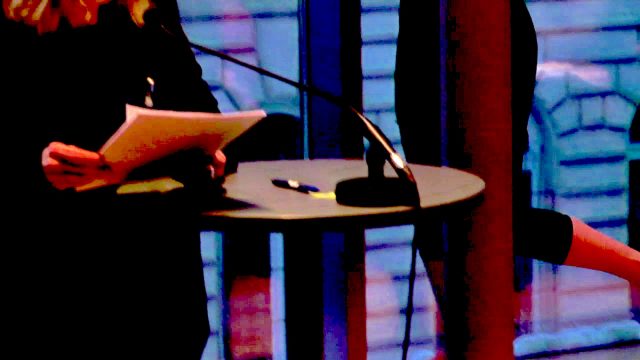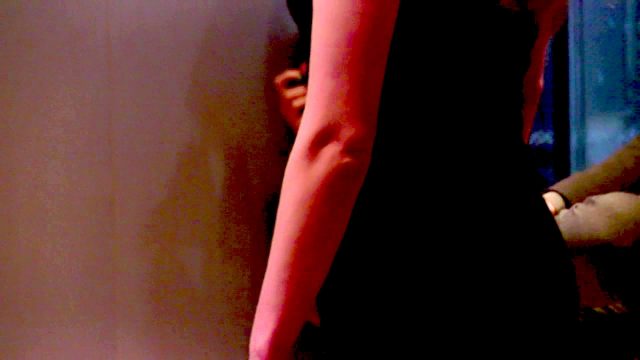Doris Ingrisch is professor of Gender Studies at the Institute for Cultural Management and Gender Studies at the University of Music and Performing Arts, Vienna.
Her research projects and publications comprise the fields of gender and cultural studies, currently focussing on art and science in dialogue; science, art, and gender; history of science; exile/emigration research; and qualitative and experimental methods.
Katharina Weinhuber studied dance pedagogics and stage dance at the Bruckner Conservatory in Linz/Austria. Since 2001 she has been working as a performer, dancer, choreographer and dance pedagogue. She continues being active in the fields of dance, performance, opera, film, and research.
Since 2013, Katharina Weinhuber has been working together with Doris Ingrisch on the research project “Science and Art in Dialogue” at the University of Music and Performing Arts, Vienna. The research work resulted in a new perspective on her own biography. Initially clearly drawn borders between the areas of art, pedagogics, curation and organisation started to blur more and more, and in the course of the work dissolved entirely. New, hybrid spaces came into being in which highly differentiated fields cooperated with each other and were enhanced by the new field, research. From outside her working biography, private life was also integrated into the process of creation and research, leading to a new awareness of her own actions and her (artistic) identity.
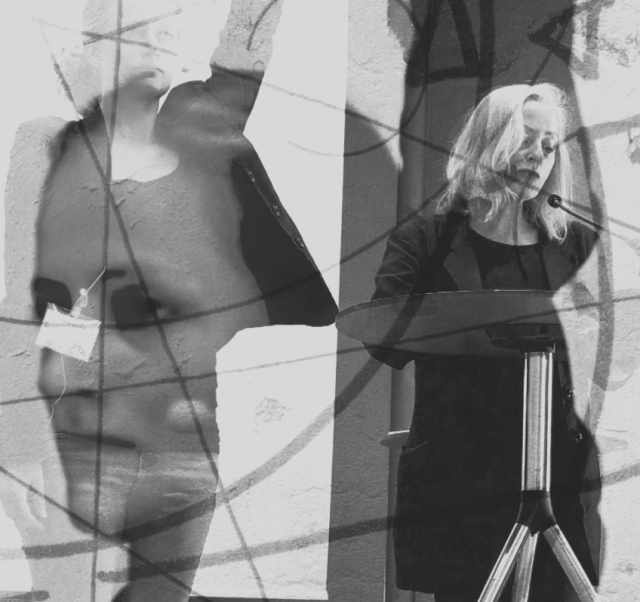
The development of thinking about art and science as intrinsically different matters, and therefore two fundamentally different spheres is to be assigned – let us bring this to mind – to the historical phase of the 18th century in Europe. Along these lines, thinking about the sexes as completely different beings has to be related to that era. The separating compulsion, as Dieter Wuttke (2003) characterised the phenomenon, stands for a new world view becoming established, in which the orders of knowledge and the sexes were closely interwoven. If we are aware of this historical development and the hierarchy within knowledge and the sexes, the desire becoming obvious in many places to bring art and science into contact again in the 21st century, is more than comprehensible. It can be understood as an instigation to explore the potential of that which is between the poles – the inter, the trans, the hybrid. Not least, this means working on the relations of thought and the relation between different forms of knowledge.
Location: Universität für Musik und darstellende Kunst Wien / mdw
A project about the connections between science, art, and gender brings much to light. It traces the cultural structures of thinking, investigates the systematic framework of societal fields and the possibilities of identity. It challenges the familiar, it puts in relation, it wants to open up new spaces. So it was clear that a lecture on this topic would also have to fathom the “safe” ground of scientific lectures. KW was ready to set out on this path with me. A first joint attempt to test the And …
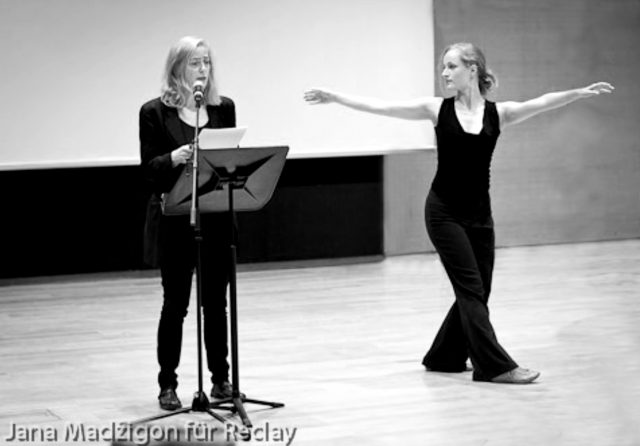
A scientist invites a choreographer and dancer for a project. “Science and Art in Dialogue. Theoretical Reflection and Experimental Arrangements” is the title of this undertaking, which developed out of an engagement with the connecting lines of science, art, and gender (Ingrisch 2012). The first experimental arrangement is a space of encounter, of getting to know each other.
What is your working process? Is there a first, second, third point? And yours? What happens when you’re developing a piece? After many conversations we decided to continue our getting to know each other in a rehearsal room, and thus on another level – not a room filled with books, records, thoughts and writings, but an empty room. A room with mirrors. Focussing on the body. Seeing the body. Perceiving it. And the shadow of the window frames on the sun-speckled parquet floor.
Pas de deux – a dance in pairs, classically danced by a woman and a man with their movements in exact accordance, often the climax, the most poetic moment of a ballet.
Our pas de deux created a thought space in which we moved and communicated – through text, body, gestures, actions, statements, expression, observation, response, dance, and impulse. Finely attuned movements between art and science, with art and science, through science and art.
We had gotten to know each other. Etymologically, to “ken” (know) comes from Old Norse and is connected with sensing and enjoyment.
Our next experimental arrangement put the focus on Beyond. What happens when I no longer rely primarily on my discipline, you no longer on yours? If we are no longer moving on the secure ground of our disciplines? What are we evoking then? When both of us enter a territory where our expertise will not carry us along? The equivalence on which our work was based – now it lay in the insecurity and the lack of familiarity to which we exposed ourselves together.
My thinking, my expression in many cases takes place via language. The cautious notion of incorporating various other levels of perception into scientific research developed to become a desire. The desire to complement the effectiveness of language in the humanties with additional levels of experience, and thus dimensions of thought, perception, and expression. This means counteracting the separating compulsion and the hierarchies inscribed therein. On the level of thought relations this means intensive experimentation with the As-Well-As, the And, in order to explore it (Ingrisch 2012)
Starting serious attempts not only to describe various modes of thought, and thus again stay within language, but to experience them myself in doing. To set myself in motion. Giving space to hearing and seeing in other ways. Trying out the potential of forms of knowledge and cognition, playing with them according to the complexity of the world.
Working with images and sounds, with movement and rhythms in a research project means offering a special place to the senses. In our new experimental arrangement, each of us chose an approach of their own. A theme began to emerge. Media came into play. A Pas de Trois began.
Medium – it mediates, is in the middle. So, a magical-technical in-between. It is capable of transmitting information and energy. Or, according to Marshall McLuhan, of extending the sensory organs (McLuhan 1964). Medium – a means of communication, of relation.
Forms of knowledge and being in process. Putting our professional identities at stake. Consciously thinking our being-in-the-world differently, in spite of taxonomies retaining us in 19th century structures. We are so much more, so much beyond the scientist, the choreographer and dancer.

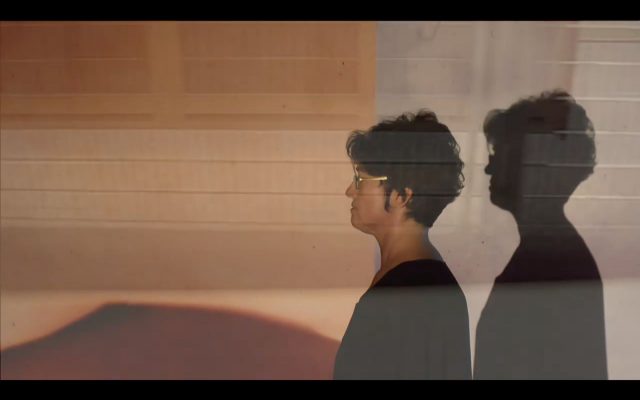
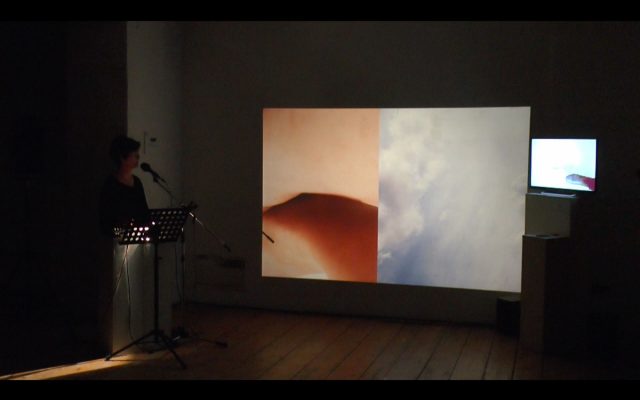




While thinking about what we did, and how, and indeed how our actions were developing, there came up terms inspired by Karen Barad’s concept of agential realism. She sees the world according to quantum theory, as an entanglement, an interrelation of forms of knowledge and being. Understanding the world as becoming in the image of diffraction – “a material-discursive phenomenon that challenges the presumed inherent separability of subject and object, nature and culture, fact and value, human and nonhuman” (Barad 2007, 381) – is simultaneously challenging and relieving in the sense of opening up boundaries of thinking which encroach on doing and feeling, stifle it because they attempt to press us into an either-or. Our approach is one that tries to bring the understanding coming from different disciplinary practices not to rival each other, but to communicate. It is an entangled approach, for we trace the common ground, the links in art and science rather than the dissociative features. What can we find there? And how can we make it visible, audible, and tangible?
If we conceive art and science as not separated, we find ourselves inter-acting, actions through which phenomena become material. Material components, subjects, discourses, devices, actions, everything intra-acts, creates reality and changes it. So – practising thinking in entanglements.
While thinking about what we did, and how, and indeed how our actions were developing, there also is the dimension of time, in which our collaboration unfolded.
We worked together for a period of several years, during which many things changed. Attempting to put in a nutshell what this period meant for us, the chronological approach is bound to fail. What we experienced can rather be circumscribed with Byung Chul Han’s thoughts about the fragrance of time: “… the subject of experience has to remain open for what is coming, for the surprises and uncertainties of the future. Otherwise, it congeals to a worker merely working off time. He does not change. Changes destabilise the working process. Contrarily, the subject of experience is never the same as it was.” (Han 2009, 13) It is these contexts in which experience and insight happen. Going into an experimental design, entering into a process, cannot be planned well. And it takes time. It also needs stepping out, a conscious detachment from routines and automatisms, a stepping out of what we know.
It requires a presence. Presence questions the separation of time and space. It makes everything be there. Perceiving, connecting. We practised presence, and experienced a time which was fragrant.
While thinking about what we did, and how, spaces played an important part. Permanent confrontation with the agency of spaces. With spaces allotted to the sciences, to the arts, and those in between. The un-lived and lived spaces. (Baier 2000) We were not only interested in three-dimensional, geometrical, theoretical space, although that, too, intrigued us with its peculiarities. Our interest also was drawn to existential space, the one we live, which we create through existential relationships, and confer meaning to, the “pool of existential orientation from which we continuously draw” (Waldenfels 1985, 184).
We fathomed the spatial, were influenced by spaces, intra-acted with them, configured them, created them in joint effort. Our experimental arrangements invited us, our guests, the audience to this space-time, a spacetimemattering (Barad 2011). Invited to delve into processes of classification. To re-experience them, and discover them anew by challenging our habitual ways of perception.

Location: Porgy & Bess
Not getting absorbed in difference, not getting absorbed in otherness. Recognising ourselves as agents who, if they choose not to remain in the close confines of their disciplines, expand their perception, the spectrum they have at their disposal beyond these boundaries, in which they can move, can be. Which effects will we then unfold? What shows when material-discursive practices are not oriented along hierarchies, demarcations, and exclusion?
We entered into exploring the in-between of movement and moment, of taking a path and backpedalling, undisturbed attention, advance and repose.
A continuation of the statement “Video is political in the deepest personal sense”(Torcelli 1996), and a redefinition of alternative spaces. An invitation to expand one’s perception. To fathom realities. Perceiving the punctum. An effect, thus Roland Barthes (1981), that indicates an indescribable element. An element that irrates us, touches us and hints at the possibility of going far beyond association. Here we encounter the atopical, placelessness as the sign of a kind of positioning outside hegemonial thinking conditions.
Images, so Vilém Flusser (1989), “mostly point out something in space-time ‘out there’ which they are supposed to make conceivable to us as abstractions (as reductions of the four space-time dimensions to the two planar ones).” During contemplation, we can let our gaze wander, moving with our intention in connotative symbol complexes, establishing relationships, breaking up before and after. A meaning forms in which linearity no longer plays a part, the logic of cause and effect is suspended. They make the world imaginable, their character is magical. Linear writing further promotes abstraction and corresponds with representational thinking, and therefore with a different consciousness. In this way the past can be deciphered as a long struggle between image and text, magic and term.
Further themes emerged.
Spaces formed.
Walking, we connect ourselves with the experience of 5 million years of upright walk. We can sense our outside and inside, feel that which we are used to calling identity, in a different manner through the conscious perception of our body in motion. A common space of walking and thinking developed. A caleidoscope of connotations opened up. By allowing ambiguity and complexity, a mode unfolded which, in opposition to that which separates, put the focus via phenomena on relations.
Through movement, we perceive space and at the same time we shape it. In walking, in thinking. By moving through them, says Michel de Certeau, we create spaces. In reflecting about the talking of steps trailing away, he presents the play of steps as the shaping of spaces. “Whereas in the active-passive commonsense model, time and space are located as stable signifiers into which the body enters, within a relational space and time are qualitatively transformed by the movement of the body. The body does not move into space and time, it creates space and time: there is no space and time before movement” (Manning 2007, xiii), so Erin Manning.
Guests:
Sakina Teyna, Singer
sakinateyna.com
JUUN
Composer, pianist and performance artist.
juun.cc
Andrea Sodomka
Works in the fields of intermedia, installation, electronic music, net.art, radio art, video and artistic photography.
alien.mur.at
Location:
Wiener Konzerthaus Wien
konzerthaus.at
Brief vignettes trace relatedness in several contexts, bring orders of knowledge into focus, and set thinking in motion.
Subsequently, we try to trace the phenomenon of relatedness in some thought vignettes. Following Gilles Deleuze and Felix Guattari, we understand thinking here as an experimental process aiming not merely at passive, but also at active cognition; and therefore not only related to the mind, but also to the body. With this definition we also assume that it is the creation of reality rather than its depiction.
«Wissenschaft, Kunst und Gender. Skizzen», in: Doris Ingrisch/Marion Mangelsdorf/ Gert Dressel (Eds.) Wissenskulturen im Dialog. Experimentalräume zwischen Wissenschaft und Kunst, Bielefeld 2017, 43-51
«to be related. Gedankenvignetten», in: Doris Ingrisch/ Franz-Otto Hofecker/ Beate Flath (Eds.), Gender – Kultur – Management. Relatedness in und zwischen Wissenschaft und Kunst. Transdisziplinäre Erkundungen, Bielefeld 2017, 47-56
«Pas de trois. Ein Sich-Bewegen im Möglichkeitsraum» in: Anna Seitz/ Alice Lagaay (Eds.), Festschrift des Theaters der Versammlung Bremen, Bielefeld 2018
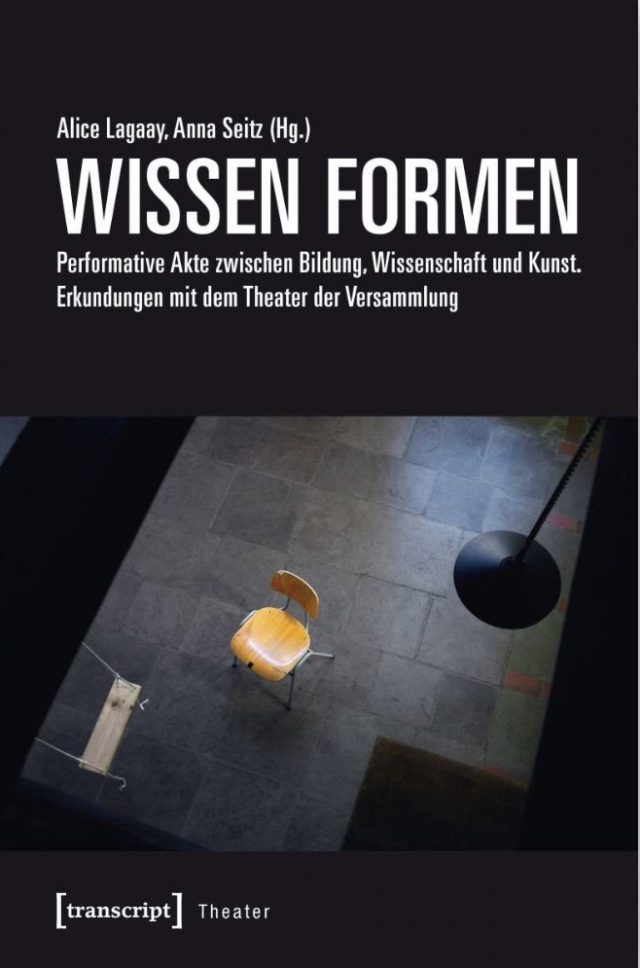
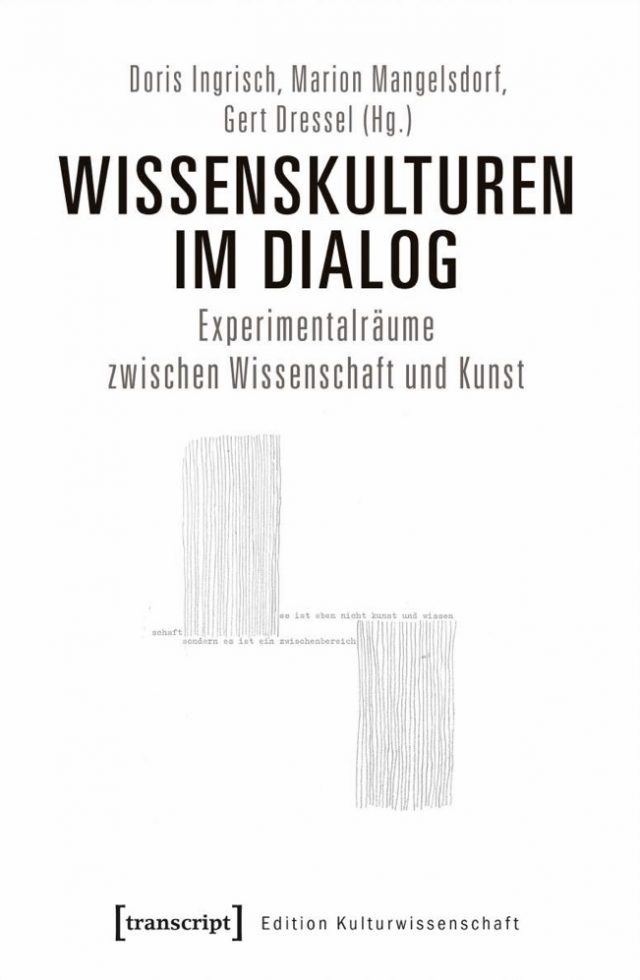

Department for Cultural Management and Gender Studies – Cultures of Knowledge in Dialogue
“Experimental Arrangements” 17. and 18. January 2013
That nowadays the concept of knowledge itself is subject to negotiation, is an extremely disconcerting development. At the same time, an immense potential of possibilities becomes apparent. Setting out from a broad concept of knowledge, which apart from that produced by the sciences, includes that of the arts and the body, the senses, tacit knowledge, etc., the conference asks what it may mean to strike up communication between different cultures of knowledge. These are questions concerning content as well as form. In the framework of a culture of dialogue, a working space is offered, and impulses given for encounters and reflections.
“Circuits” 26. and 27. February 2015
Cultures of Knowledge in Dialogue – science and art in dialogue: the first Experimental Arrangements took place during a conference in January, 2013, and are now followed by further Circuits … science and the arts, scientists and artists meet: with a focus on resonance and dissonance alike, on possible contact areas as well as shared potential and cognitive interests. Not only programmatically, but in dialogue, not only regarding what but also how. In listening, in feeling, in experiencing, in expressing, in reflecting.
“Interferences” 22. and 23. September 2016
In the third part of Cultures of Knowledge in Dialogue, we once more want to fathom the boundaries of our thinking, and therewith conclude this cycle for the time being, circling around the concept of Interferences. In the phenomenon of waves/interferences in which some things are enhanced and others cancelled out, it may happen that things taken for granted disappear, while the unexpected becomes visible. Interference allows one to think forms of life and knowledge process-related. “Infinity and nothingness are infinitely threaded through one another so that every infinitesimal bit of one always already contains the other. The possibilities for justice-to-come reside in every morsel of finitude.” (Karen Barad)
Videos: https://mediathek.mdw.ac.at/ikm-wissenskulturen/
